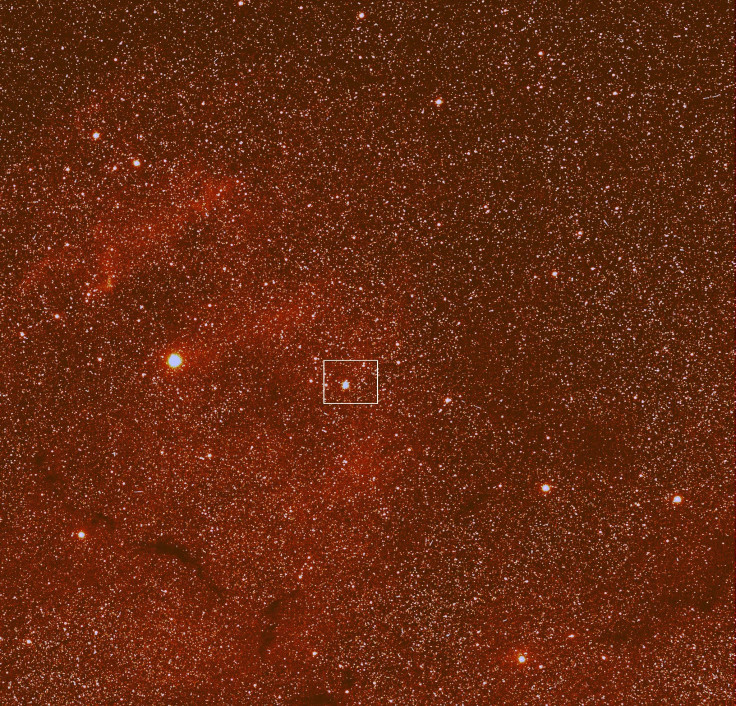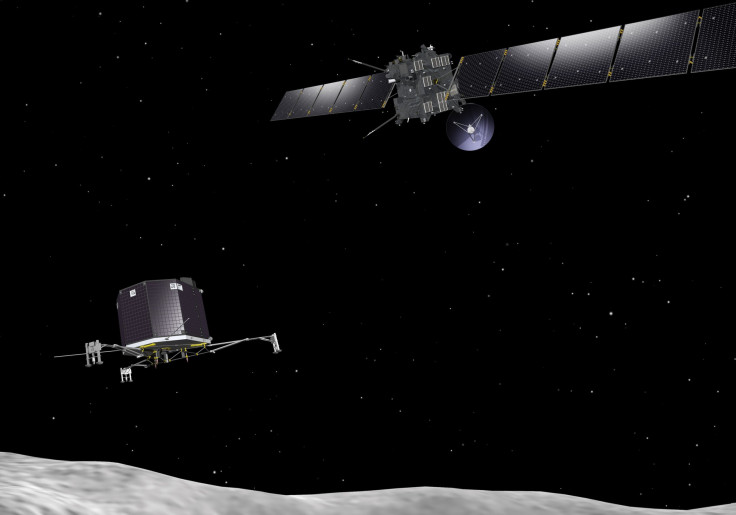Comet-Hunting Rosetta Satellite Locks On To Its Target, Comet 67P/Churyumov–Gerasimenko
The European Space Agency’s comet-hunting Rosetta satellite woke up from hibernation on Jan. 20. While the satellite is still far away from its target, comet 67P/Churyumov–Gerasimenko, it did manage to observe the object on March 20 and 21.

The ESA has targeted comet 67P/Churyumov–Gerasimenko for the historic mission. Rosetta will stay in close orbit with the comet, with an expected August rendezvous, before deploying the Philae lander in November. Using its Optical, Spectroscopic and Infrared Remote Imaging System (OSIRIS), Rosetta observed comet comet 67P/Churyumov–Gerasimenko, reports the ESA. OSIRIS' two cameras were able to observe the comet in narrow-angle and wide-angle views. On Friday, the Philae lander woke up in good working condition and performed a software update before returning to hibernation.
My controllers say that I am in quite good condition after 39 months of hibernation!
— Philae Lander (@Philae2014) March 28, 2014Rosetta has been waiting a decade for its date with comet 67P/Churyumov–Gerasimenk. The satellite was first launched in 2004 and put into hibernation on June 8, 2011 after getting into position near Jupiter. The ESA launched the “Wake Up Rosetta” campaign and the satellite’s alarm clock went off on Jan. 20.

Matt Taylor, the ESA’s Rosetta project scientist, said in a statement, “This is a great start to our instrument-commissioning period and we are looking forward to having all 11 instruments plus lander Philae back online and ready for arriving at the comet in just a few months’ time.”
According to the ESA, Rosetta is 5 million kilometers (3 million miles) from the comet but is on track to reach the comet by August. The Philae lander will make contact with the comet on Nov. 11, 2014. OSIRIS’ cameras will be used to hone in on comet 67P/Churyumov–Gerasimenko and the data will be used to set Rosetta’s trajectory.

Rosetta's next big milestone occurs in May when it performs its first comet rendezvous maneuver. Before that, ESA scientists are working to bring the satellite's scientific instrument suite online. OSIRIS' observations will be used to gain new insights into the shape, size and rotation of the comet which will help researchers plan Rosetta's orbit. Rosetta is equipped with 11 scientific instruments, while the Philae lander has 10 scientific instruments, which will be used to "create the most complete picture of a comet to date," says Sam Gulkis, of NASA's Jet Propulsion Laboratory and principal investigator for the NASA-designed MIRO, the Microwave Instrument for the Rosetta Orbiter. The Rosetta mission will mark the first time a spacecraft will land on a comet, and Rosetta's close orbit goes beyond a traditional flyby.
You can track where Rosetta is in the solar system here and a video describing the next steps in the mission is below, courtesy of the ESA.
© Copyright IBTimes 2024. All rights reserved.












